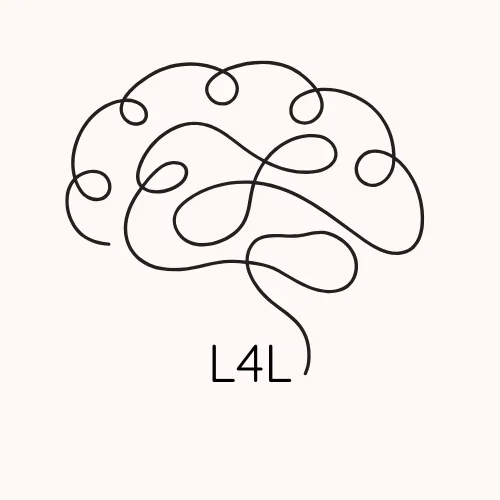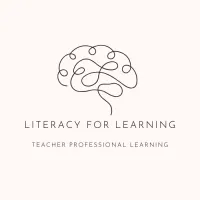Unlock
Critical Thinking through
Reading and Writing
Our Literacy for Learning method is your roadmap to implementing the Science of Learning. By emphasising cognitive science principles, we reduce overwhelm and give educators a repeatable system that works across subjects and year levels.

Free: Guide to Building Critical Thinkers (Without A Million Activities)
The Real Reason Critical Thinking Isn't Sticking In Your Classroom - And What To Do Instead
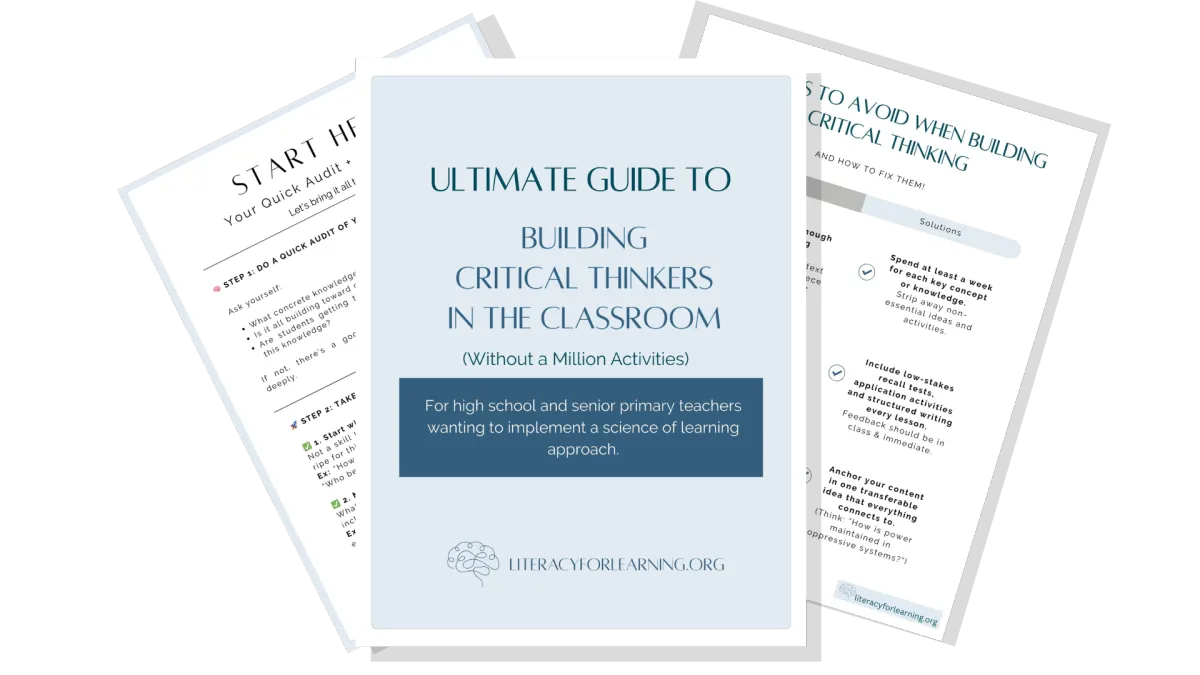
Read our latest posts
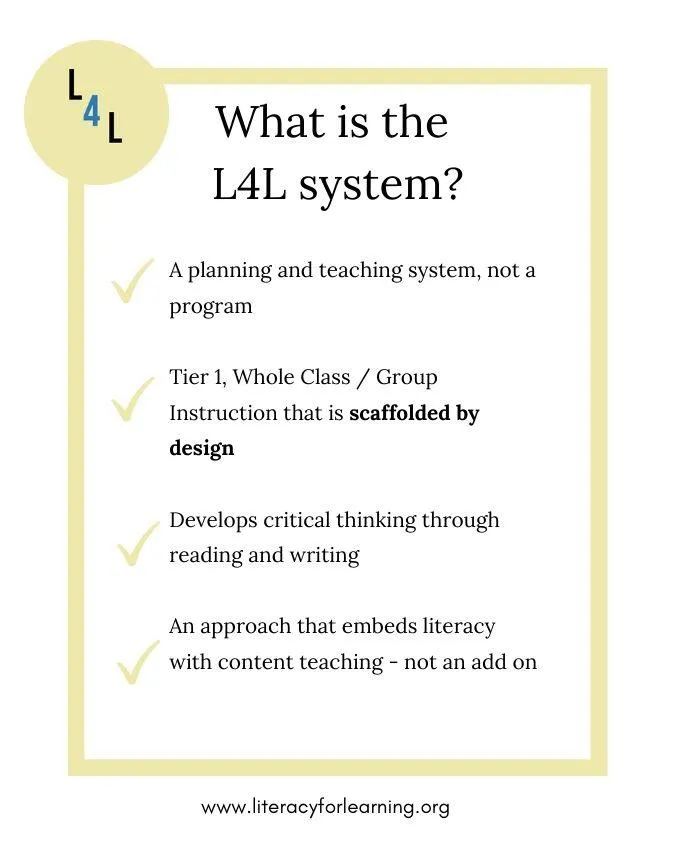
A Beginner's Guide to the L4L Method: A System for Implementing the Science of Learning in the Classroom
Welcome to the Literacy for Learning (L4L) method—an evidence-based approach that combines the science of learning with practical classroom strategies.
Many teachers are stuck between wanting to improve student outcomes and feeling overwhelmed by endless demands. The L4L method simplifies lesson and unit planning while maintaining high challenge and rigour—so you don’t have to choose between quality teaching and your own sanity.
This blog introduces the basics of L4L, showing you how to get started and inviting you to explore further through our upcoming workshops and community.
In this post we will cover:
A Beginner's Guide to the L4L Method: A System for Implementing the Science of Learning in the Classroom
Why I Stopped Reinventing the Wheel - And Why You Should Too
What Is the Basis of the L4L Method?
Is the L4L Method only for Secondary Teachers?
The Literacy for Learning (L4L) System: A Three-Tiered Approach to Transforming Teaching
Tier 1 of the L4L System: Understand the Science
Tier 2 of the L4L System: Science-Based Unit and Lesson Design Principles
Tier 3 of the L4L System: The L4L Implementation Model - An Embedded Approach to Literacy
Why I Stopped Reinventing the Wheel - And Why You Should Too
A few years ago after having my second child, I signed up for the 28 by Sam Wood program. I wasn’t feeling great—I actually weighed more than I had during pregnancy (yikes)—and I knew I needed to get healthier. Here’s the thing: there was nothing magical about the program. I could have researched workouts, planned meals, and tracked my own progress. But I didn’t. Why? Because the program saved me time, reduced my mental load, and gave me a structure that worked.
That’s exactly how I want you to think about the Literacy for Learning (L4L) method.
You could spend hours researching the Science of Learning, piecing together different principles, and figuring out how to apply them across your lessons. Or—you could use a system that’s already done the work for you. L4L gives you a structured, high-rigour, teacher-first approach so you can focus on what matters: delivering powerful lessons that build critical thinking.
What Is the Basis of the L4L Method?
The Literacy for Learning method bridges the gap between cognitive science and practical teaching. It’s not a set of pre-made resources that strip away teacher autonomy, nor is it a rigid collection of pedagogical techniques. Instead, it provides a structured framework that aligns with how students learn best while empowering teachers to think, adapt, and grow.
L4L is a system for planning Tier 1, whole-class instruction that is scaffolded by design, ensuring all students can access rigorous learning without requiring you to create additional modifications for students who might need additional help.
For students needing Tier 3, intensive 1:1 support, additional tailoring may be required. However, this system is designed to support most students, offering built-in scaffolds for those who need extra help while also providing opportunities for extension.

Is the L4L Method only for Secondary Teachers?
Not at all. While we often emphasise critical thinking in secondary schools, the L4L method is just as effective in primary schools.
Primary teachers can incorporate it into their literacy, humanities, science, and art lessons. In fact, if primary educators embraced this approach early on, it could significantly strengthen the foundation for students, enhancing their learning throughout their primary years. By embedding the L4L method at an early stage, we would see much greater long-term benefits and a smoother transition to secondary school, reducing the need for high school teachers to revisit foundational concepts.
Getting Started with L4L
The L4L system is built on three key principles:
Teachers as Experts: L4L is all about the shift away from teacher as facilitator.
Most of us were led to believe that teacher led instruction is harmful and so it can be hard to shift that belief in ourselves. However, students need, and deserve, an expert guiding them to mastery.
While teacher led instruction is not harmful, it can be executed poorly and, just like any teaching approach, the outcome will depend on the skill of the teacher. At L4L we believe that good teaching is all about the strength of the individual teacher and so we encourage you and your school leadership to invest in your development - not just resources.

Most of us were led to believe that, just as suggested in the cartoon above, teacher led learning is harmful and should be avoided at all costs - it is hard to shift that belief.
Explicit Instruction and Schema-Building: The L4L Method focuses on teaching clear, structured content that builds interconnected knowledge.
Explicit instruction here does not mean a whole lesson of teacher talk. But it does mean the teacher decides, tells and shows students what they need to know before asking them to apply that knowledge in various contexts and to various problems or tasks.
Simplified Planning: The L4L Method provides you with a structured, transferable framework for unit and lesson planning so that you can focus your effort on what matters most - the content and feedback in the classroom.
By focusing on these principles, L4L offers a practical solution for improving learning outcomes while reducing stress and workload. Next, we will do a deep dive on the L4L System.
The Literacy for Learning (L4L) System: A Three-Tiered Approach to Transforming Teaching
The L4L System is built on three interconnected layers that guide teachers from understanding the Science of Learning to effectively applying it in their classrooms. This structured approach ensures that teachers develop expertise, design rigorous lessons, and implement adaptable teaching strategies—all without unnecessary complexity or extra workload.
Critically, using this three-tiered approach supports staff to build consistency across a school and network, while still allowing for autonomy and flexibility.

Tier 1 of the L4L System: Understand the Science
The foundation for pedagogical decisions
The L4L system is based on key bodies of work in the Science of Learning namely Cognitive Load Theory and Science of Reading. This foundation ensures that instructional choices are rooted in research about how students acquire and retain knowledge. Without this base, lesson planning risks being ineffective or disconnected from how learning actually works.
This is what true teacher empowerment looks like—when you understand how learning happens, you’re no longer reliant on others telling you what to do.
Instead, you can make informed adjustments, troubleshoot challenges, and refine your teaching with confidence because you know why certain strategies work and how to adapt when they don’t.
To get the basics, go ahead and read my blog post 'Getting started with the Science of Learning'. Whenever you get stuck, you can come back to these principles and frameworks to troubleshoot.
Tier 2 of the L4L System: Science-Based Unit and Lesson Design Principles
Guiding curriculum and instruction
Once teachers understand the Science of Learning, they need a structured approach to applying it. The second layer of the L4L system provides clear principles for designing knowledge-rich lessons and units based on principles drawn from Cognitive Load Theory and the Science of Reading. These principles guide curriculum discussions and ensure that lesson design supports student retention, engagement, and critical thinking.
Cognitive Load Theory: Teaching for Deep Understanding
Teach Less, Teach Depth, Teach Slowly – Focus on essential knowledge, teaching it slowly and thoroughly to prevent cognitive overload and allow for many opportunities for application, feedback and repetition.
Build from the Bottom of Blooms – Start with ensuring students memorise foundational knowledge before progressing to higher-order thinking. Use frequent checks for understanding and repetition to strengthen retention.
Challenge Over Entertainment – True engagement comes from rigorous thinking and learning about the wonders of the world, not activities designed for fun without substance.
Science of Reading: Knowledge Before Skills
Knowledge First, Skills Follow – Teach students key content knowledge before asking them to apply skills like analysis or evaluation. Skills are not the learning goal; they are used to help consolidate knowledge-based learning goals.
Pre-Teach Essential Conceptual Knowledge – Before students read, watch, or engage with new material independently, explicitly teach the concepts and factual information they need to understand it.
Literacy as a Tool for Learning, Not a Standalone Learning Goal – Use reading, writing, and vocabulary activities to reinforce and consolidate knowledge, don't teach them as standalone skills.
By applying these principles, teachers can create structured, knowledge-rich lessons that build deep understanding while reducing cognitive overload.
Tier 3 of the L4L System: The L4L Implementation Model - An Embedded Approach to Literacy
Flexible and adjustable for teachers and students
The final layer of the system focuses on practical application. The L4L implementation model allows for flexibility, ensuring that teachers can adapt it to different student needs without adding extra planning burden. This approach provides a structured yet adaptable framework that supports both teacher autonomy and student success.
4 Planning and Teaching Steps
The L4L model operates in four progressive steps, guiding teachers from curriculum planning to classroom execution. Each step aligns with both cognitive science and high-impact strategies to maximise student learning.
Step 1: Eliminate – Focus on What Matters
Rooted in Cognitive Load Theory, this step ensures teachers identify the essential conceptual and factual knowledge for a unit.
Teachers define a single, overarching Essential Idea to guide all instruction. Any content that does not directly contribute to this idea is removed.
Ineffective (or low ROI) teaching practices—such as reading the entire novel in class time, inquiry learning, and redundant tasks—are scaled back or eliminated altogether to reduce teacher workload and student confusion.

Step 2: Lay Foundations – Identify and Build Relevant Knowledge
Before students engage with texts (this includes videos or textbooks), teachers explicitly teach background knowledge, including both conceptual knowledge (schemas) and factual knowledge.
Knowledge building is reinforced through activities, mini tests, vocabulary instruction, close reading and writing.
Step 3: Learn – Reinforce Knowledge Through Literacy
The L4L System focuses on literacy as the vehicle for learning, not as a separate learning goal. This means that we use close reading, writing, and vocabulary activities to support students learning the important content we have selected.
Teachers prioritise close reading to reinforce content knowledge and build analytical skills.
Students are taught Tier 2 vocabulary that helps them understand, think and write about the knowledge and key concepts of the unit, we don't overly focus on vocabulary that is in the readings.
Sentence starters and writing structures help students articulate their thinking, reinforcing knowledge while developing literacy skills.
Students write in every lesson to consolidate and demonstrate learning, ensuring knowledge moves from short-term to long-term memory.
Step 4: Consolidate – Mastery Through Extended Writing and Feedback
Writing is used as a tool for mastery and a way to demonstrate student knowledge and thinking, not just assessment. Students synthesise their learning through structured, extended writing tasks.
Teachers provide immediate, in-class feedback reducing marking workload while increasing effectiveness. Using Single Line Rubrics can ensure teacher feedback is focused and impactful.
The Three-Column Writing Model is used to scaffold and support students to organise their ideas and articulate their thinking with precision.
By following this three-tiered approach, the L4L System empowers teachers to move beyond surface-level strategies and into evidence-based, high-rigour teaching that builds student knowledge and literacy with lasting impact.
Why This Model Works
In effect, teachers only need to master 5 teaching strategies in the classroom. The simplicity of the process gives teachers mental load back so they can focus on the important work of how best to explain complex ideas and how to sequence the information to students. By focusing on knowledge building, vocabulary and sentence structures, you as the teacher have clear points to provide feedback on.

This streamlined approach ensures:
☑️Cognitive Science Principles Are Applied – Teaching is aligned with how students learn best.
☑️Knowledge is Prioritised – Teachers focus on explicit knowledge-building rather than broad skills.
☑️ Workload is Reduced – No unnecessary planning, excessive differentiation and out-of-class marking is minimised or eliminated altogether.
☑️ Students Achieve Mastery – Through structured writing, vocabulary reinforcement, and precise feedback.
This system is simple yet rigorous, providing teachers with a structured yet adaptable framework for delivering high-impact instruction.
How Can You Get Started?
Mastering a Science of Learning teaching system, like L4L, takes time, perseverance, and deep professional learning—because we all know that great teaching isn’t about following scripts; it’s about developing expertise. That’s why L4L is built on the belief that strong teachers, not just strategies, drive student success. We don’t want to encourage teachers to be passive implementers—we want to equip you to take ownership of your profession.
If you're keen to jump in, here are a few places you can start:
Understand the Science – Familiarise yourself with foundational concepts like cognitive load theory and Scarborough’s Reading Rope. Check out my blog, Beginner's Guide to the Science of Learning, to get out started.
Shift your approach from skills-based teaching to a knowledge-first strategy. Consider: What key concept or piece of knowledge can students grasp that will support their understanding in different contexts?
Begin your lessons with a mini-test of previous knowledge and vocabulary. Mark in class and provide feedback.
Join a community of like-minded teachers – Get ongoing support, practical strategies, and the confidence to teach with impact.
Want to see how L4L can transform your teaching? Join our upcoming workshops and become part of a movement that values knowledge, rigour, and teacher empowerment.
Join a community of teachers getting research-backed insights in their inbox each week
We'd love to have you :)
Frequently Asked Question
General Questions
How does the L4L process work?
The Literacy for Learning (L4L) process is a streamlined system built on principles of cognitive science, in particular the elements of Scarborough’s Reading Rope and Cognitive Load Theory. It’s designed to take the guesswork out of lesson planning and equip teachers with a clear, practical framework for creating rigorous, knowledge-rich lessons. The process starts by grounding teachers in the foundational knowledge about how students learn best. From there, we provide simple, actionable strategies to build students’ schema and critical thinking through reading and writing—without relying on fads or overwhelming amounts of resources. With a focus on explicit instruction and structured planning, the L4L process helps teachers implement these principles confidently and consistently.
What makes your professional learning and support unique and effective?
What sets L4L apart is that it is a holistic planning and teaching system rather than pre-made resources or a bunch of teaching strategies. Our approach bridges the gap between theory and practice, breaking down complex cognitive science principles into a teaching model that is easy to understand and implement in the classroom. We also offer ongoing support, fostering a sense of community where teachers can share their successes and challenges. This personalised guidance ensures that teachers not only learn the method but also adapt it to their unique contexts, making the learning truly transformative.
What outcome can teachers expect from the L4L professional learning and resources?
When you work with us, you can expect to feel empowered and confident in your teaching. You’ll gain a deeper understanding of how students learn and how to create lessons that maximize engagement and impact. This transformation isn’t just about improving your students’ outcomes—it’s about simplifying your workload and giving you clarity in your teaching practice. By focusing on what truly works, you’ll save time, reduce overwhelm, and experience fulfillment knowing you’re making a lasting difference in your students’ lives.
Who is an ideal candidate for the L4L professional learning community?
The ideal candidate for the L4L professional learning community is a teacher who’s passionate about delivering high-quality education and is ready to embrace a rigorous, knowledge-rich approach. Whether you’re feeling overwhelmed by conflicting teaching strategies or simply looking for a more effective way to engage your students, this community is for you. It’s particularly valuable for educators who want to prioritise explicit instruction, build their students’ critical thinking skills, and feel confident in their ability to simplify and implement the science of learning in their classrooms.
Why is learning some of the science so important when it comes to teaching?
Teaching is one of the most important jobs in the world, but it’s also incredibly complex. Understanding some of the science behind how students learn—like how knowledge builds on prior knowledge or how memory functions—gives teachers a powerful advantage. Without this foundation, it’s easy to rely on trends or surface-level strategies that may not truly support student growth. Learning the science empowers teachers to make evidence-based decisions, create lessons that stick, and build the schemas for critical thinking that change lives. It’s about teaching with intention and confidence, knowing you’re giving your students the best possible foundation for their futures.
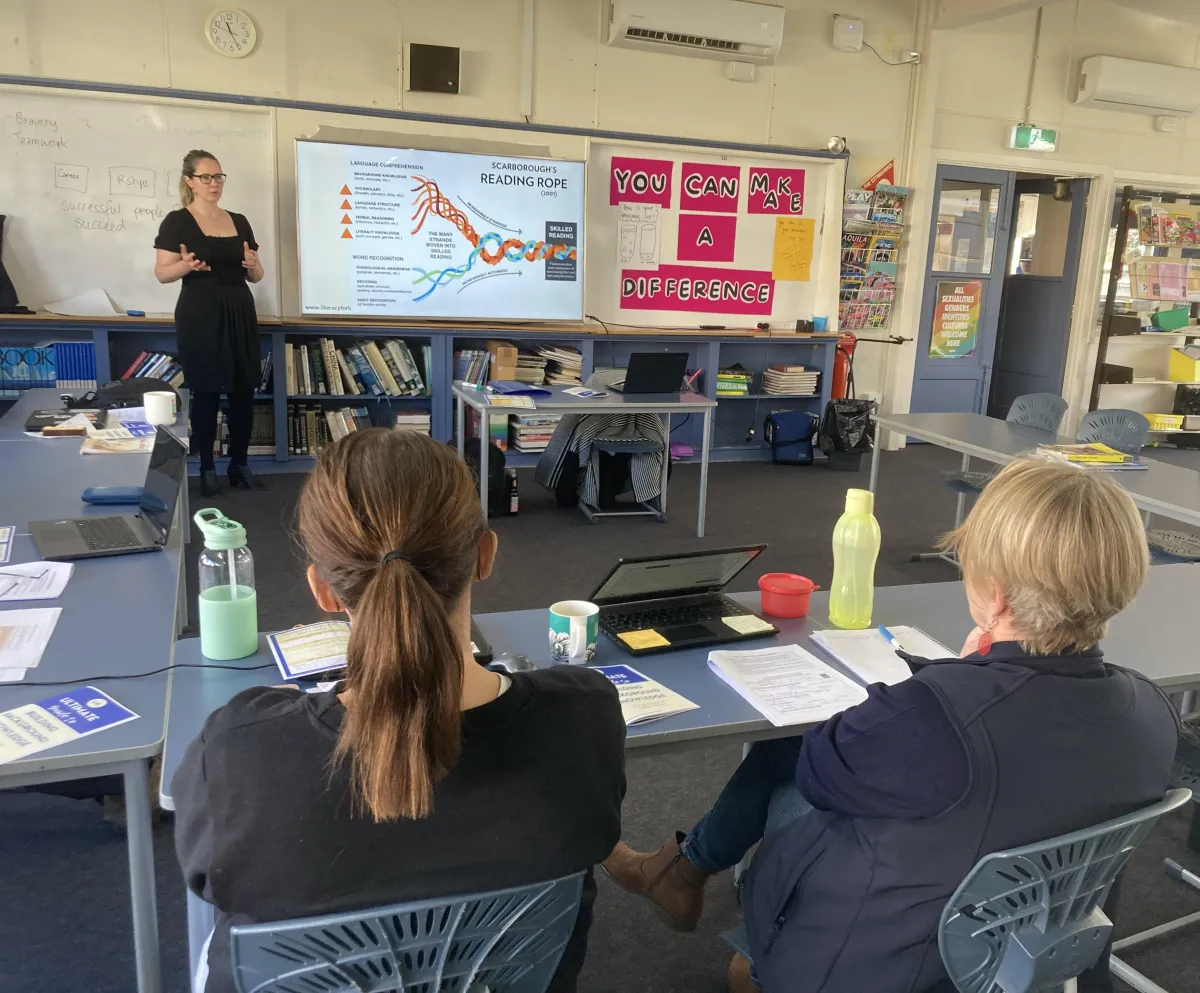

Empowering teachers to implement the Science of Learning
Links
Home
About Us
Blog
Newsletter
Join our community to stay updated on the latest courses, exclusive content, and learning resources.
